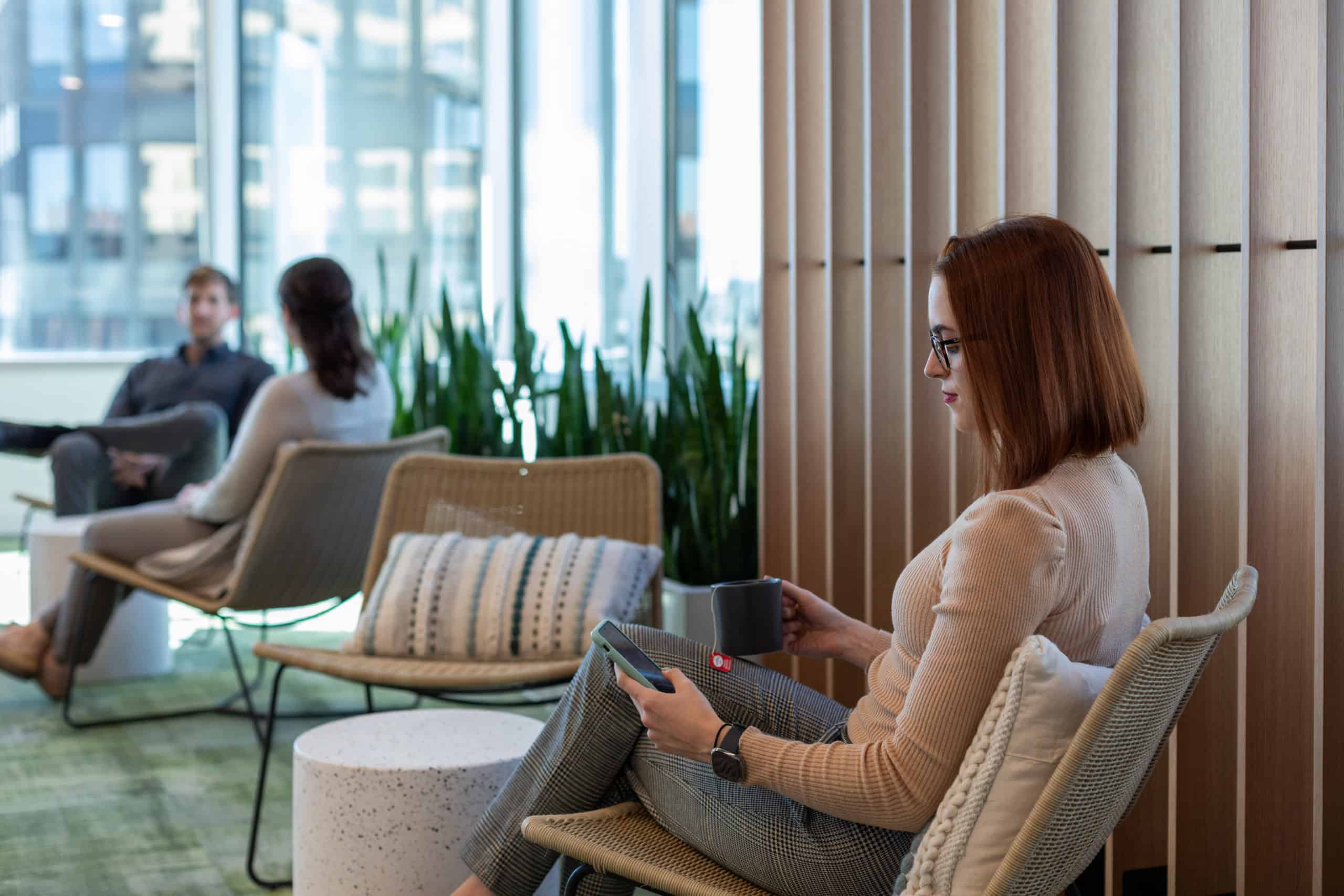When considering Smart Buildings, I typically categorize features and functionality into two camps: Experience and Operations. In this article, the first of a two-part series, I’ll share my thoughts on Experience and how technology can improve the experience of those using your space, whether they be employees, students, patients, or customers. The primary objective when undergoing any technology rollout is to begin with the use cases first and avoid jumping straight into software demos.
Experience Use Cases
When I evaluate a “day in the life” of an employee and how technology can impact his/her journey, there are many opportunities that come to mind. Among those is helping the employee request or reserve amenities and services. As companies are implementing their return-to-office plans, many are deploying a hybrid work approach that relies on flexible desking or hoteling. To improve the adoption of this approach, companies are deploying desk reservation tools that provide booking functionality directly from a smartphone. This allows employees to book desks on the fly, while they are riding the train into the office, or still sipping their morning coffee at home.
Another important factor of the hybrid approach is knowing whether your teammates are going to be in the office at the same time, thus maximizing you’re in-office workday. The ability to create buddy lists or friend circles in these reservation tools can provide notifications when co-workers book a desk, not only nudging teammates to schedule the same day, but also allowing them to find a desk close by to improve collaboration.
Creating a Smart Building doesn’t only include ease of space reservation. As employees continue to return to the office, companies are implementing new policies and behaviors that need to be communicated effectively to support the new hybrid workplace. The health attestations that were commonplace in 2020 and 2021 are dwindling, but the ability to integrate forms and policies, company announcements, quick employee satisfaction surveys and other communication features into the workplace experience has not. Enter the Workplace Experience App. These apps provide users with a single source for all their workplace needs – from booking desks to ordering food to scheduling a workout to knowing when the next company social event is scheduled.

Many Use Cases in One Place (+ Future Proofing)
The companies providing these apps have made it easy to integrate with many of the common corporate systems we already use, such as Outlook or Gmail, Teams and Slack, Concur, Uber and Lyft, ServiceNow and PeopleSoft just to name a few. These integrations extend the functionality of the underlying platform to the Workplace Experience App to provide a holistic company-branded one-stop shop. In addition to steering employees to a single digital location for all their needs, the app provides a future-proof platform that will not change even when the underlying system changes. For example, if you switch from the PeopleSoft application to Workday, the employee won’t know the difference because they access their HR data through the overall experience app which hasn’t changed.
But I don’t want to install some corporate app on my phone!
As digital experiences permeate the workplace, there will be some employees who feel their privacy may be at risk, or they would prefer not to have corporate apps on their personal devices. This is unavoidable, but you do have some options. If you don’t provide corporate phones for your employees, the only tool you have is great Change Management. The goal of the Workplace Experience App is to improve the employee’s day by making it more streamlined, providing tools at their fingertips right when they need them, and sharing information so they aren’t having to search for it and waste time!
Change Management is about communicating these benefits to the entire employee population, so they get on board. Start a campaign. Leverage gamification in the app to reward people for using it – for example, a free meal when you use the app to place your lunch order five times. Or, better yet, book your hoteling desk using the app ten times, and earn the corner office the next time you come in. Once the reluctant few realize how much easier it is to navigate their day with the app, they’ll jump on board with both feet.
Final Thoughts
It’s very important to start with the use cases. Why do we need more technology? What challenges are we trying to eliminate? What data are we trying to capture? Once you’ve defined those, rank them in order of importance and start slowly. Depending on which use cases you’ve ranked at the top, you could implement two or three of them out of the gate. But be methodical and do plenty of testing using pilot groups of employees. And don’t just choose the employees who are digital natives. Tap a few of the old timers who don’t know how to use Twitter and have no clue what the Metaverse is all about. They will be the real test of whether your solutions are easy to use and provide value.
Interested in learning more about Smart Building Technology? Read Part 2 of this series Leveraging Technology to Streamline Facility Operations.

